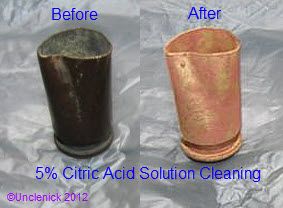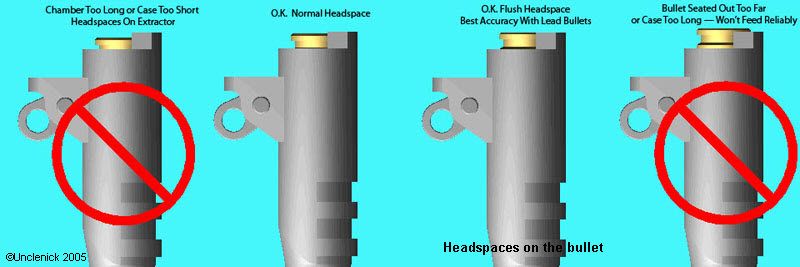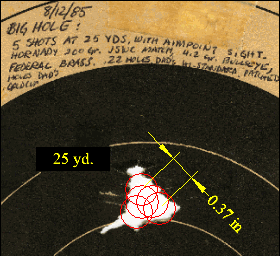The cost gets lost because anyone shooting the big boys much reloads ammo. How much that costs is volume dependent. I'm not saying anyone achieves net savings by reloading—usually it just means you shoot a lot more, and not that you spend less—but the costs vary a lot depending whether or not you cast your own bullets or shoot enough to buy primers in slips of 5,000 or buy powder in 8 lb canisters or even work something out with still cheaper surplus powder. There's no single fixed "right" percent discount that is universally applicable to reloading costs. But reloading does cut cost enough that shooting the big boys is a manageable expense.
Even for 45 Auto I have a dedicated progressive press and run many thousands of rounds a year through it. Especially in years that give me the required time. To me, that's the real trick. Time. Time to shoot and time to reload and time to ponder what I've learned from it all. That matters more than any specific chambering.
But as to the original topic, there are quite a number of pro's to .45 Auto that I think are not always considered:
If you shoot cast or other soft bullets through guns chambered for this round, the barrels have essentially eternal life, same as a 22 rimfire. I've seen various estimates, usually along the lines of 50,000 rounds for lead, but that's for 1911's where link lugs and locking lugs and other, non-bore parts of the barrel gradually wear. In my S&W 25-2, I fully expect the 200,000 round level of wear Ed McGivern got from his K-22's is perfectly reasonable to expect. After all, it is shooting cast lead target loads of 200 grains with about 4 grains of Bullseye or its equivalent 231/HP38 or N310 load. Maybe 11,000 psi. What's to wear out?
Very long brass life is another benefit of 45 Auto for the handloader. Long after my roll-crimped 357 and 44 mag revolver cases have split at their mouths, 45 Auto keeps on going. Even in revolver, all the light loads need is a light taper crimp. The brass sees very little stress.
Back in the late 1980's I followed a bulk purchase of 1000 Winchester cases through 50 reloading cycles. I was probably averaging 1000 rounds a week in the Goldcup back then, so this only took a year. By the end, half these cases had either been lost to the Range Gods or split ath their mouths. The cases were 0.025" shorter than they had started out (there isn't enough pressure in 45 Auto to stick the case to the chamber for stretching, so that doesn't happen; instead they fatten to fit the tapered chamber, then the brass is flowed back to that wider base during sizing). But they kept working, and the cases that weren't lost or split kept going well beyond the half-century mark. Try doing that with your 9 mm or 40 S&W.
I long ago discovered that 45 Auto cast bullet loads work best loaded to headspace on the bullet. It substantially improves accuracy and reduces leading. If you do that, you don't need SAAMI case length to avoid headspacing on the extractor hook (lousy for lead bullet accuracy). Case life instead becomes length-independent.
And the low pressures of the 45 Auto let you use about any brass case you can find. The range foundling below was probably in the soil for a year or two. It had to be straightened after cleaning by sticking a small Phillip's Head screwdriver shaft inside, pulling its sides outward, then running it onto an expander, then resizing and loading it normally. I just did it to prove a point: 45 Auto works even with brass that is in lousy condition by standards that have to be applied to higher pressure cartridges. It shot fine and showed no pressure signs.

The bottom line: If you want a handgun chambering that is great for a survivalist, 45 Auto has to be near the top of the list because of longevity of the gun and brass and the modest quantities of powder it consumes. Sure, everyone fantasizes about popping the apocalyptic Zombie in the gray matter with some uber-powered handgun load. Fugheddaboudit!. Zombies are not one of the options. This is a practical power level handgun cartridge for practical people. A semi-wadcutter will kill a rabbit just fine without throwing meat all over creation.
And that's another point. Accuracy.
I've put this image up before. When I was learning how to fit up 1911's from the late Russ Carniak I got this group with Hornady jacketed SWC's. My long-barrel-life lead bullets don't hold that tight, but they print under an inch at 25 yards. And that jacketed bullet target makes the point the accuracy potential for this round in commonly available arms is astonishing. I call that minute of rabbit for the patient hunter.
So, what's not to like? The 45 Auto isn't much of a barrier buster. The 9's and other higher pressure rounds have that over it. But how often do you really expect to encounter an armored rabbit or having to shoot out a tire? That's movie stuff, a few oddball criminals notwithstanding.



